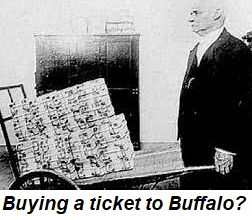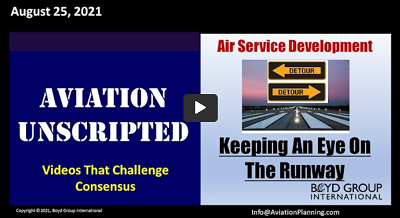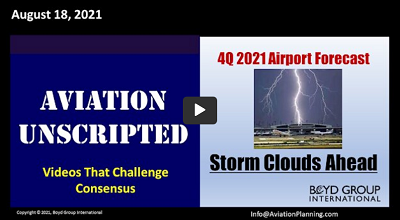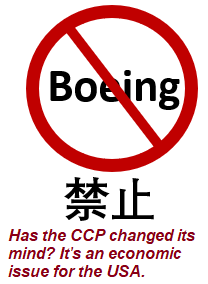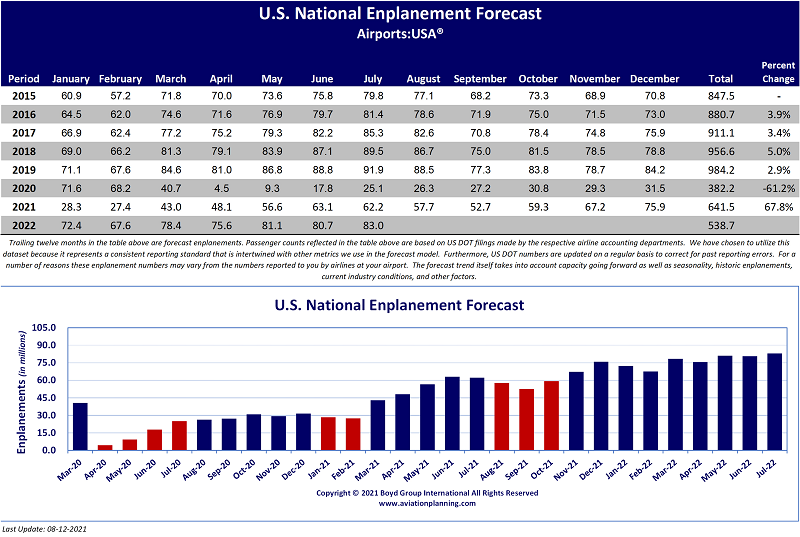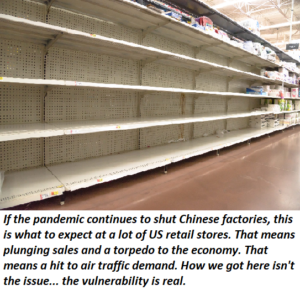Connectivity –The Real Challenge For Rural America
Let’s grab a third rail – a sacred belief – a mantra not to be questioned.
There’s a new air service structure in the USA – and it needs to be fully recognized.
Now, that statement threatens to break the rice bowl of a whole herd of consulting firms, which are working hard to “lure” airlines – heck, a duck with a chair on its back, anything – to bring “flights” to local small community airports around the country.
Here’s a hint: virtually every mode and channel of communication has changed in the past 20 years. No single one has been more transformed than air transportation.
Then toss in the economic, commercial and consumer changes seen as a result of the CCP-pandemic, and it’s more than obvious that the world is moving into a different communication structure. Air transportation has been transformed structurally by these changes.
The opportunity is in developing new approaches to working air transportation mode into the new milieu of faster and more effective communication channels.
 Point: these changes actually put small and rural communities on a far more level economic-development playing field than ever before.
Point: these changes actually put small and rural communities on a far more level economic-development playing field than ever before.
Heresy? Yes. But at Boyd Group International, we’re going to be doubling-down on outlining these new opportunities.
So, please log on to Aviation Unscripted this Thursday for a video that will challenge ambient assumptions about rural communication and outline new approaches that represent solutions for the future, not band-aids over past problems.
Our channel is at www.Rumble.com and can be accessed directly by clicking here.
Mark your calendar and join us this Thursday!
_____________
Boeing – And U.S. Economy –
Getting Hit By China Economic Collapse
Sorry, we cannot get away from things happening in China.
Decisions made in Beijing will affect to varying degrees Bangor, Bozeman and Baltimore. The latest is the locked door that China has established against Boeing, which has a direct and indirect effect on businesses across the USA.
It’s amazing that the nation’s #1 single export producer has been left adrift by the people inside the Beltway.
China has not accepted or ordered a single 737 Max since 2019, when the aircraft was grounded. The rest of the world, mostly, has now approved the airliner and, although there have been some cancellations, new orders are being registered.
Except in the world’s #3 airliner market. China.
We covered this in an Aviation Unscripted video a few weeks ago. The 737 Max airliners that were grounded over two years ago by the CAAC are still parked. The more than 100 units on order are in never-never land. These were a key component of an agreement by Beijing during the Trump administration to purchase more goods from the U.S. to offset the trade balance.
Could Be That Boeing Is A Dirty Word In The Biden Clique. Recent discussions between the U.S. trade ambassador and the Chinese counterpart may as well have been an exchange of recipes instead of any hard stance on the part of the USA. If Boeing is looking for support from the Biden group, they may be disappointed. Politically, the people inside the White House may be cowering away from doing anything Boeing-related due to recent accusations against the company in regard to the Max debacle. Image, probably, even at the expense of jobs and the economy.
Even More Fun: A Chinese Travel Collapse. Aside from the geopolitical issues, there’s more bad news for Boeing’s fortunes – economic chaos in China.
Today, China needs more airliners like Egypt needs locusts. Air travel volume has plunged 24% in the past quarter. While the hoodlums in Beijing are planning an invasion of democratic Taiwan, the mainland Chinese economy is coming rapidly down.
Boeing and the suppliers on which it depends need to go back to the forecast drawing boards. The company recently forecast a need for 8,600 airliners in China over the next 20 years, with reliance on a rapid recovery from the CCP’s Covid pandemic.
Given the collapse of the housing Ponzi-bubble – which is gaining momentum – plus the inability of China to produce sufficient power to its factories (due to bad infrastructure, not “new demand”) it is very hard to understand Boeing’s long-term logic. And as for a rapid recovery from the CCP-Covid mess, today China appears to be going in the opposite direction. Big time.
The bottom line is that Boeing – and the suppliers that depend on that company – need to clearly tumble to the fact that the China market is closed to them. The U.S. will continue buying massive stuff from that country, but the criminals running the government can pick and choose import winners with impunity.
The American economy is the loser.
___________
And, In Regard To China & Airliners
This week’s Aviation Uncensored video addresses the issue of whether Chinese airliners can threaten Boeing and Airbus.
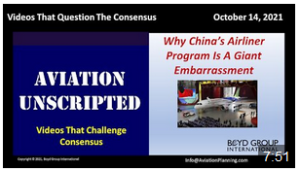 Actually, what the Chinese government is producing is an embarrassment to China… the C919, the CR929 and the ARJ-21 are nothing more than attempts to be just like existing airliners from the West.
Actually, what the Chinese government is producing is an embarrassment to China… the C919, the CR929 and the ARJ-21 are nothing more than attempts to be just like existing airliners from the West.
Actually, they are a lot less in all regards. There is no way these sleds are a threat to anybody except the Chinese economy itself. When/if the China economy rebounds, reliance on these platforms will keep the Chinese air transportation industry years behind the rest of the world.
Log on here, or go to the home page to take a look.




